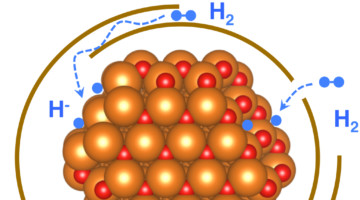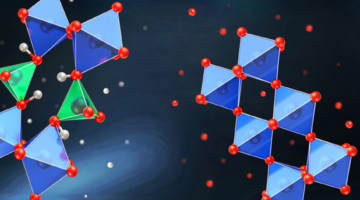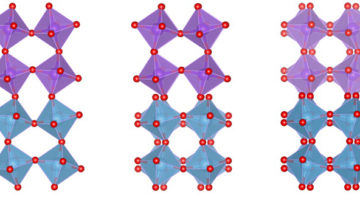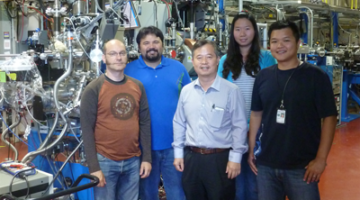A powdery mix of metal nanocrystals wrapped in single-layer sheets of carbon atoms shows promise for safely storing hydrogen for use with fuel cells for passenger vehicles and other uses. Now, a new study provides insight into the atomic details of the crystals’ ultrathin coating and how it serves as selective shielding while enhancing their performance in hydrogen storage. Read more »
Elucidating the mechanism of MgB2 initial hydrogenation via a combined experimental–theoretical study
Magnesium borohydride Mg(BH4)2 is a promising solid-state hydrogen-storage material, releasing 14.9 wt% hydrogen upon conversion to MgB2. Although several dehydrogenation pathways have been proposed, the hydrogenation process is less well understood. This study elucidates the key atomistic mechanisms associated with the initial stages of hydrogen uptake within MgB2. Read more »
A Multifunctional Material with Electric-Field Control
Three distinct crystalline phases with different electronic, magnetic, and optical properties were reversibly induced in a material through the insertion and extraction of ions by an electric field at room temperature. Such multifunctional materials are desirable for many applications, from smart windows to spintronics. Read more »![]()
![]()
Magnetism Emerges at Wonky Interfaces
Researchers have found a new way to control magnetism at the atomic level that will serve as a model for studying emergent phenomena in other systems. The ability to engineer and tune properties on such small length scales can (eventually) enable us to design exciting new magnetic devices. Read more »
Understanding Barriers to Higher-Capacity Rechargeable Batteries
Vanadyl phosphate can theoretically accept twice the number of lithium ions as battery materials currently in use. In practice, however, it doesn’t live up to expectations. New research at Beamline 6.3.1 using a variety of hard and soft x-ray spectroscopies helps zero in on why. Read more »
Toyota Collaborates with the ALS and Molecular Foundry
Toyota has been working at the ALS for a few years now to gain deeper insight into the chemistry of electrolytes for use in magnesium-ion batteries. The hope is that the research eventually leads to a fully developed magnesium-based battery technology that would replace lithium-ion batteries with essentially twice the energy in the same volume. Toyota hopes to move toward this goal more quickly through a new collaborative research project at the ALS and the Molecular Foundry. Read more »





